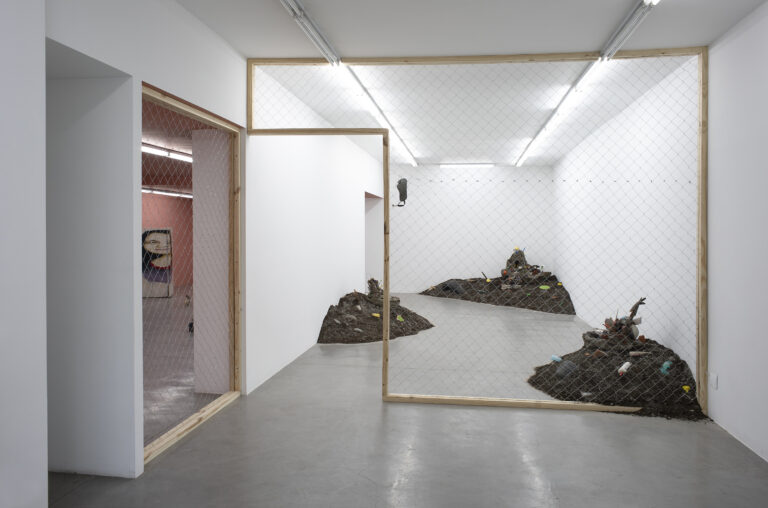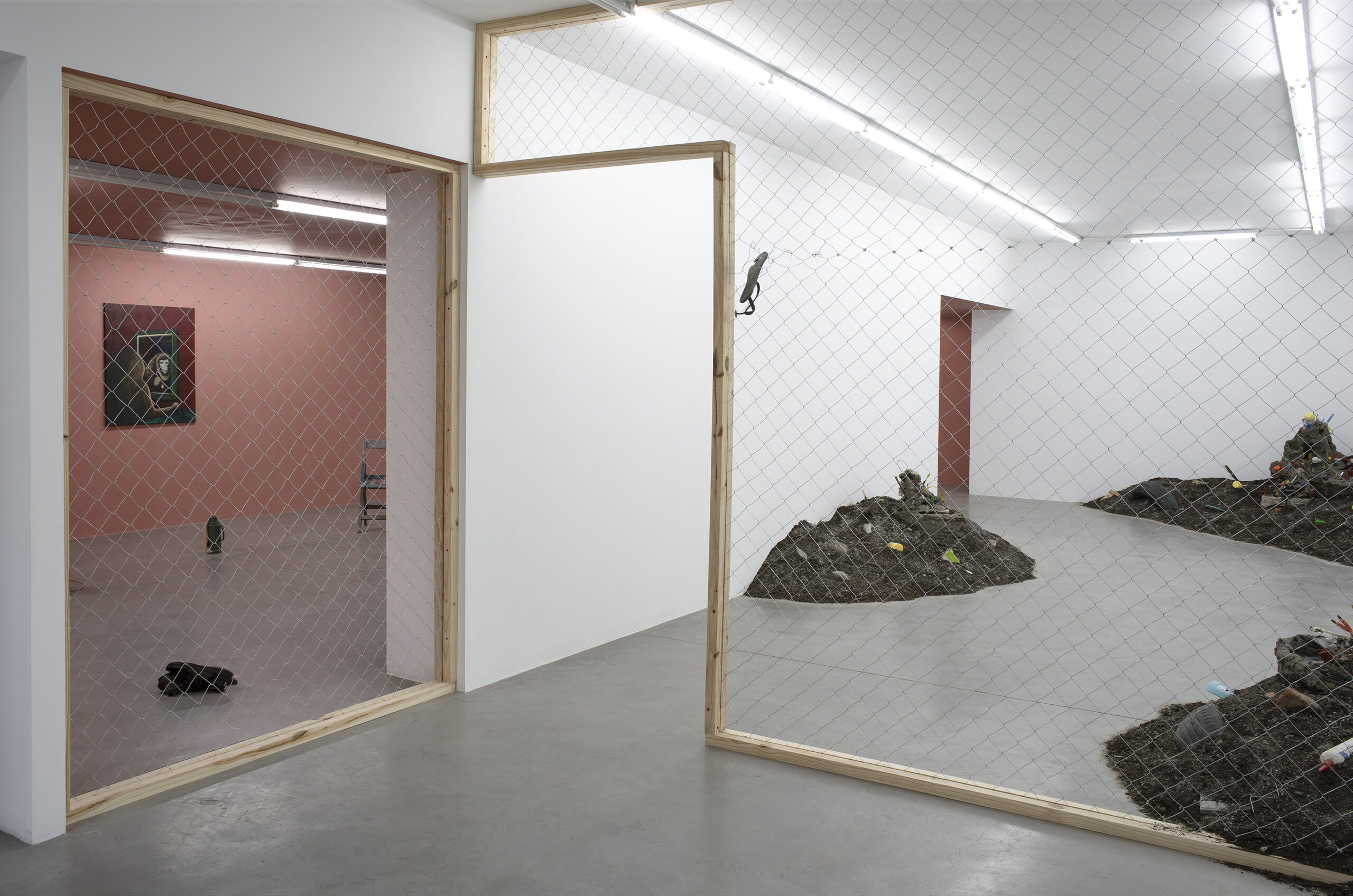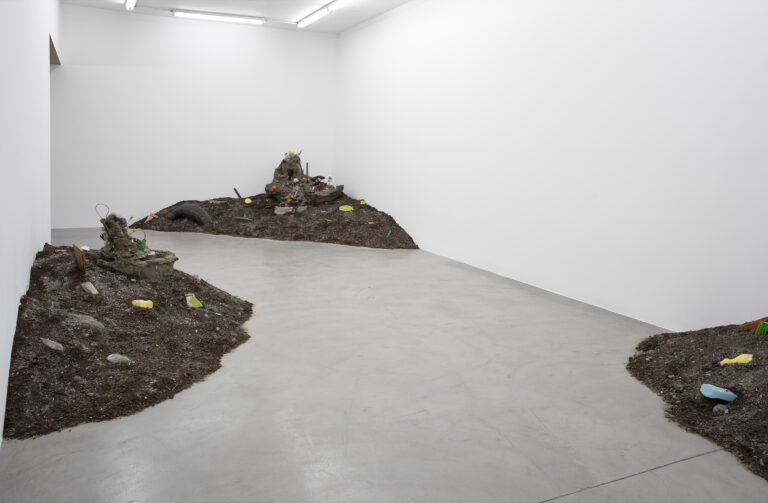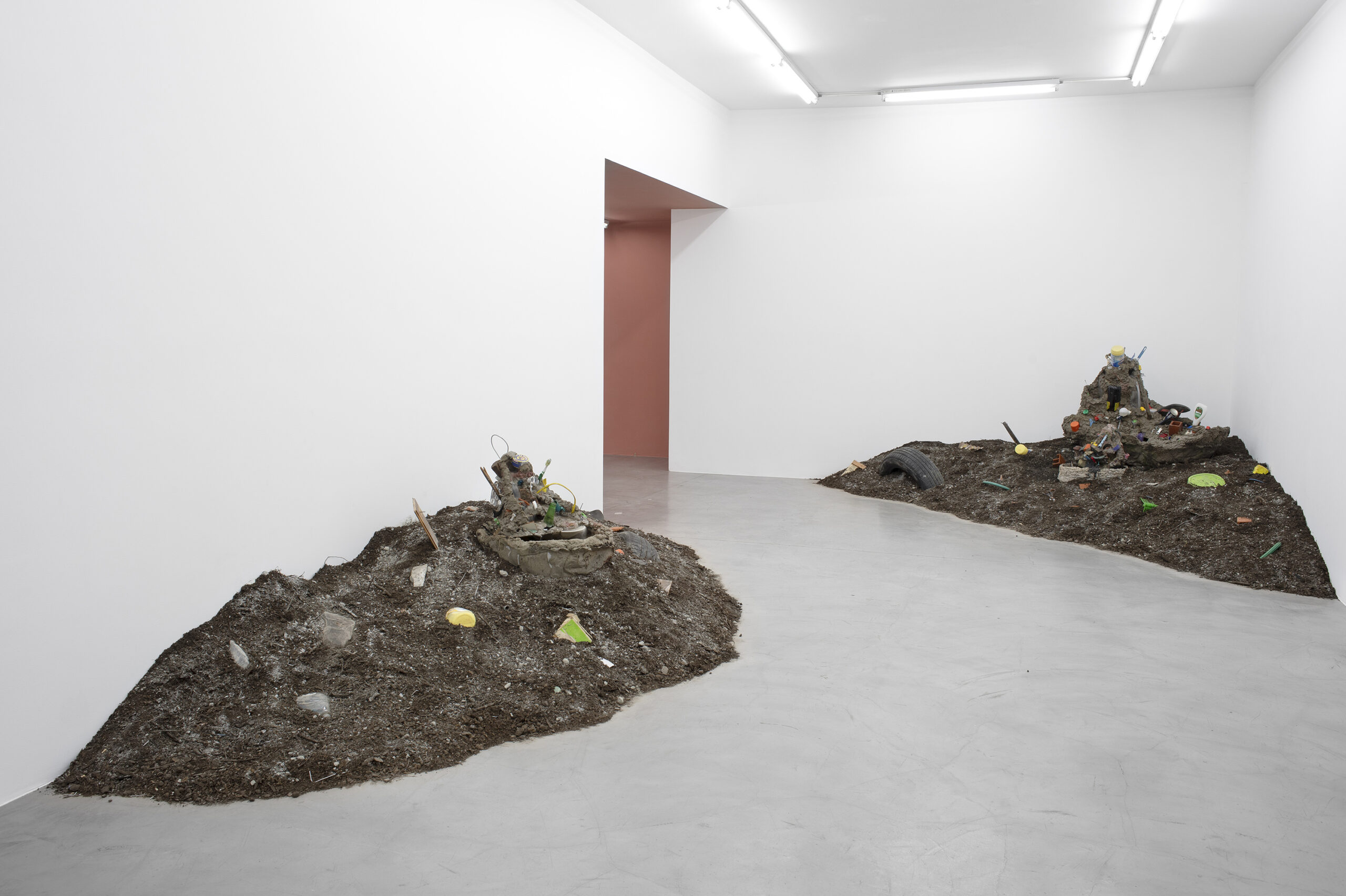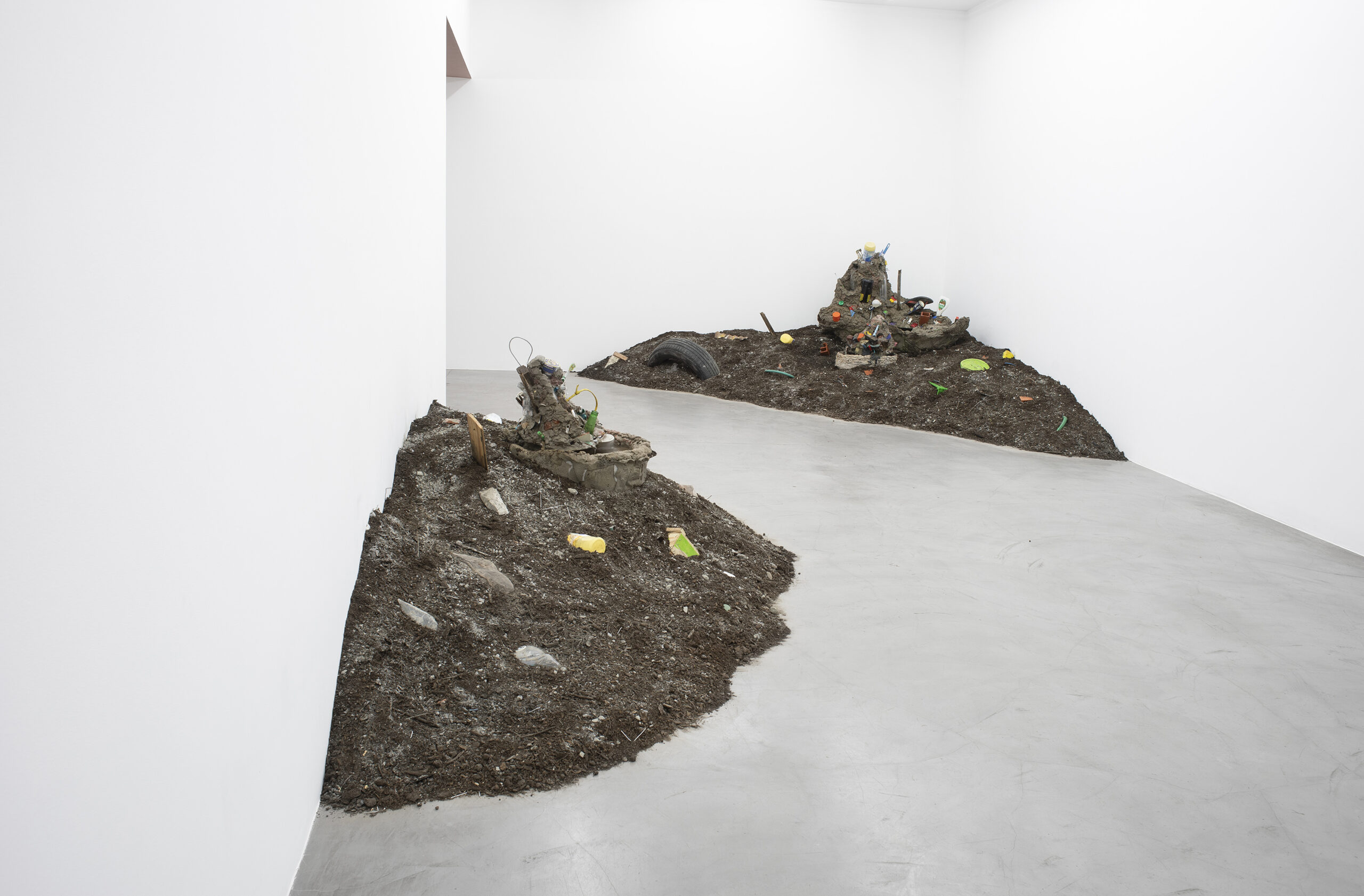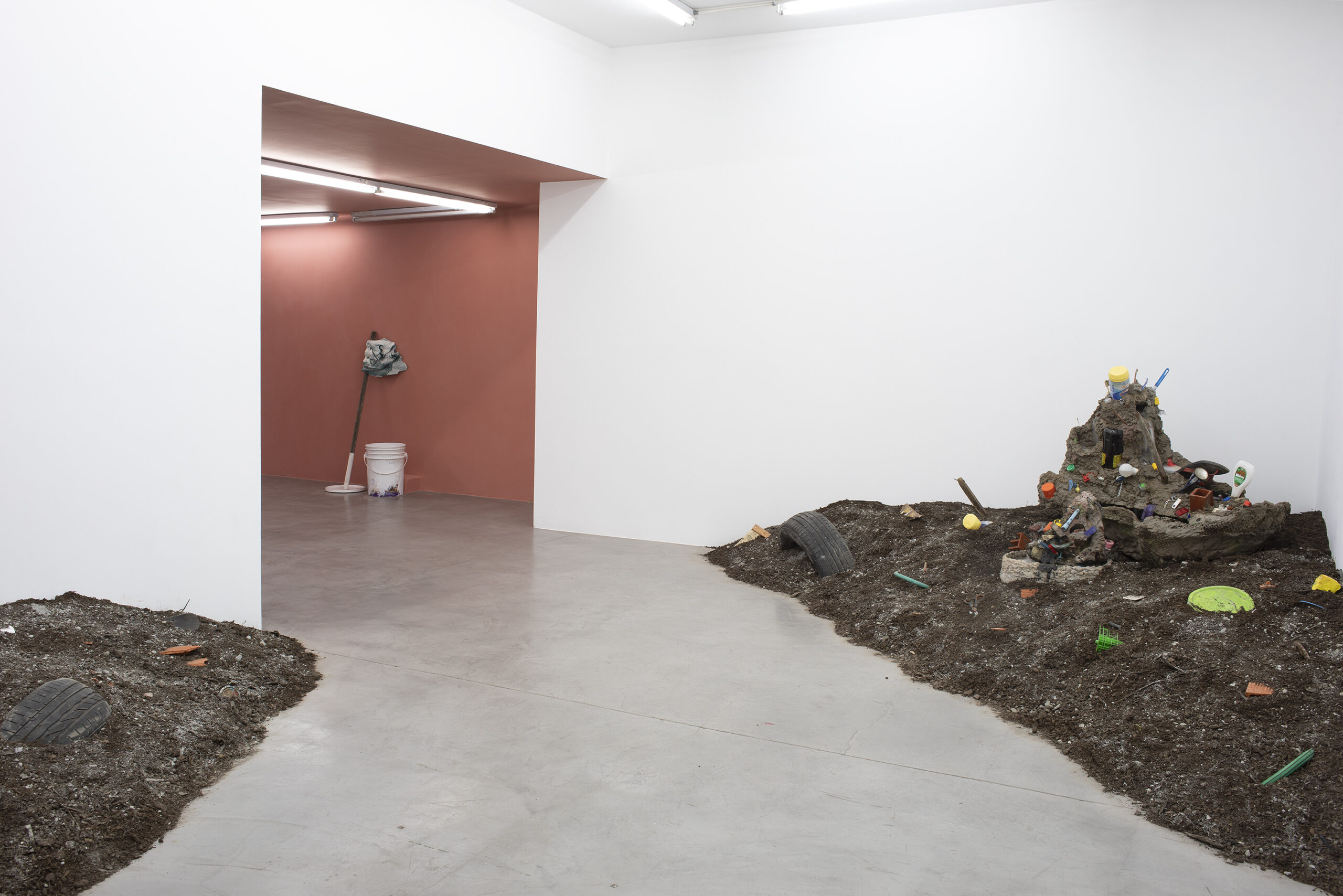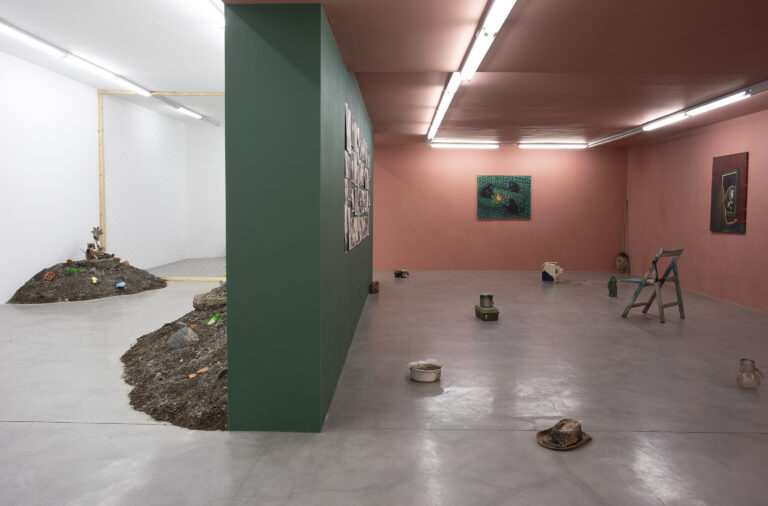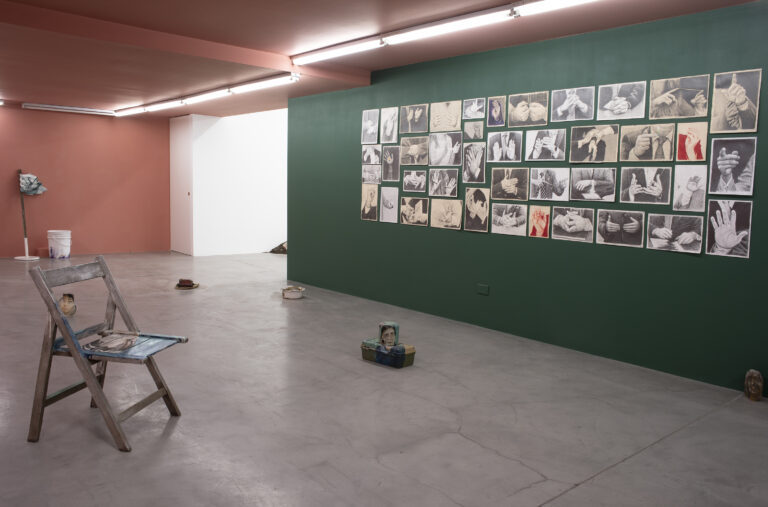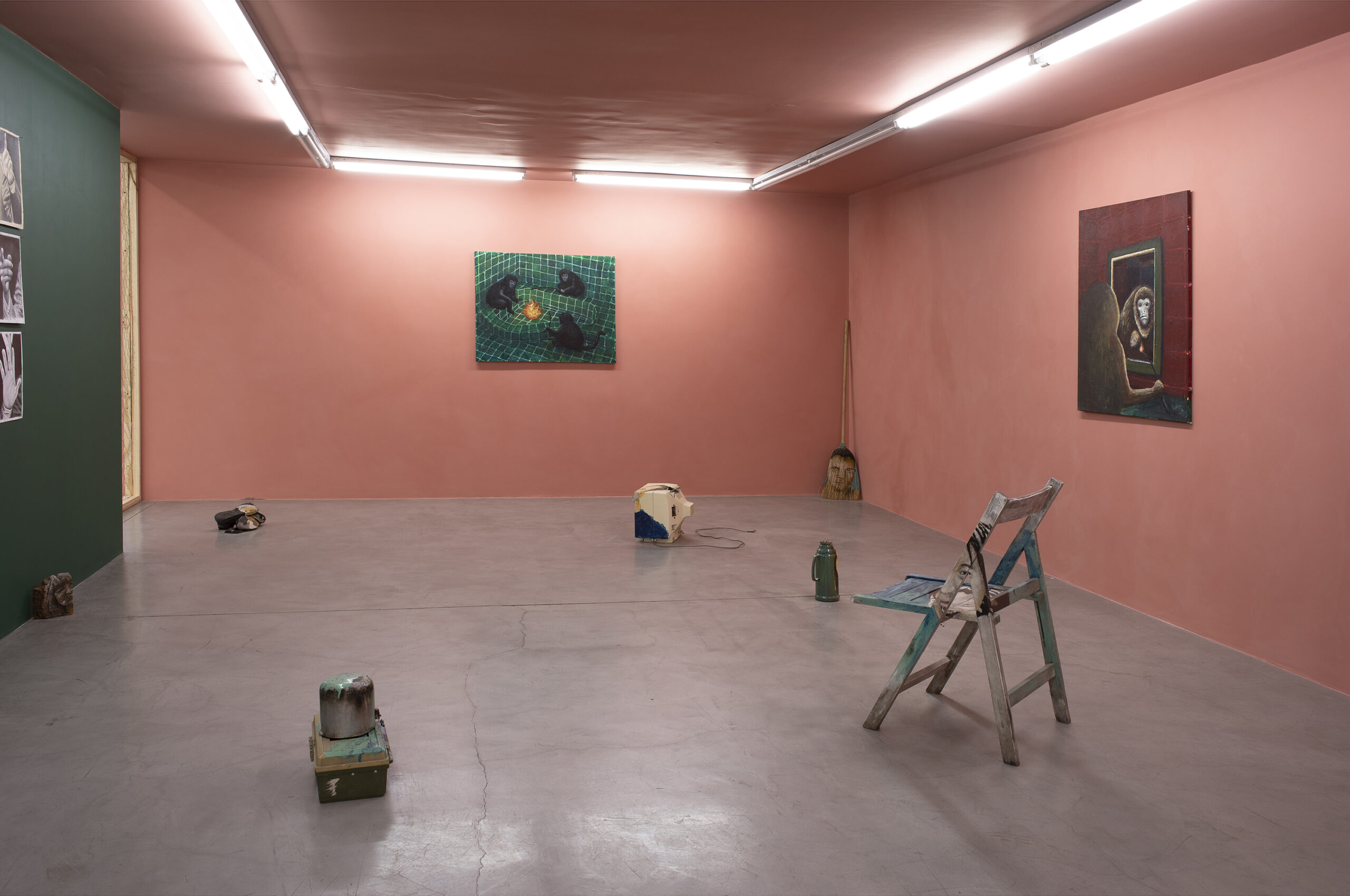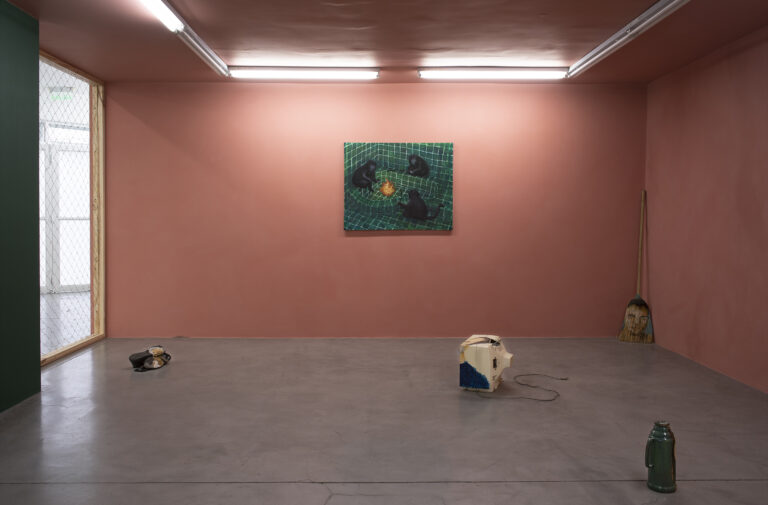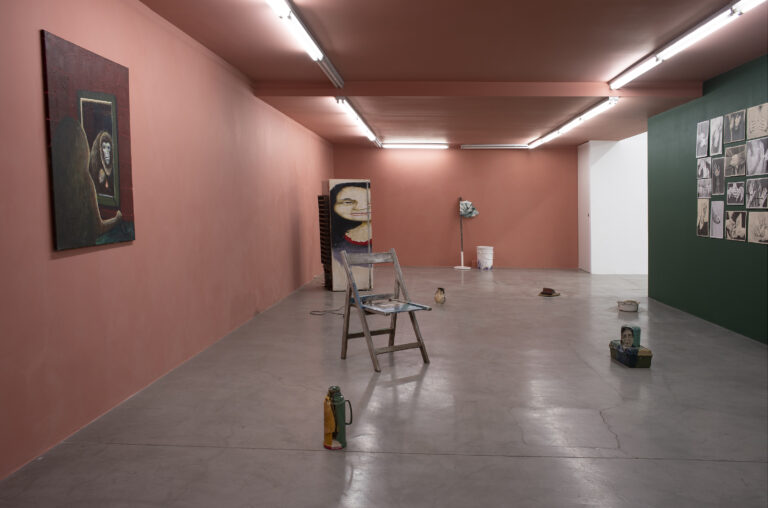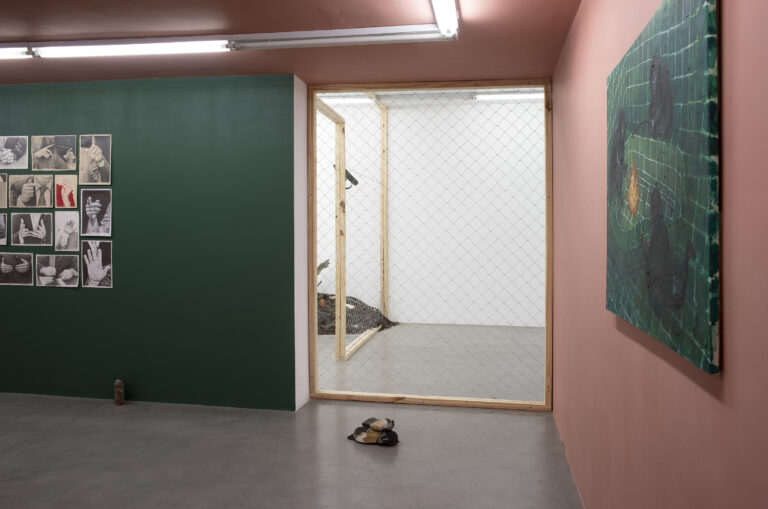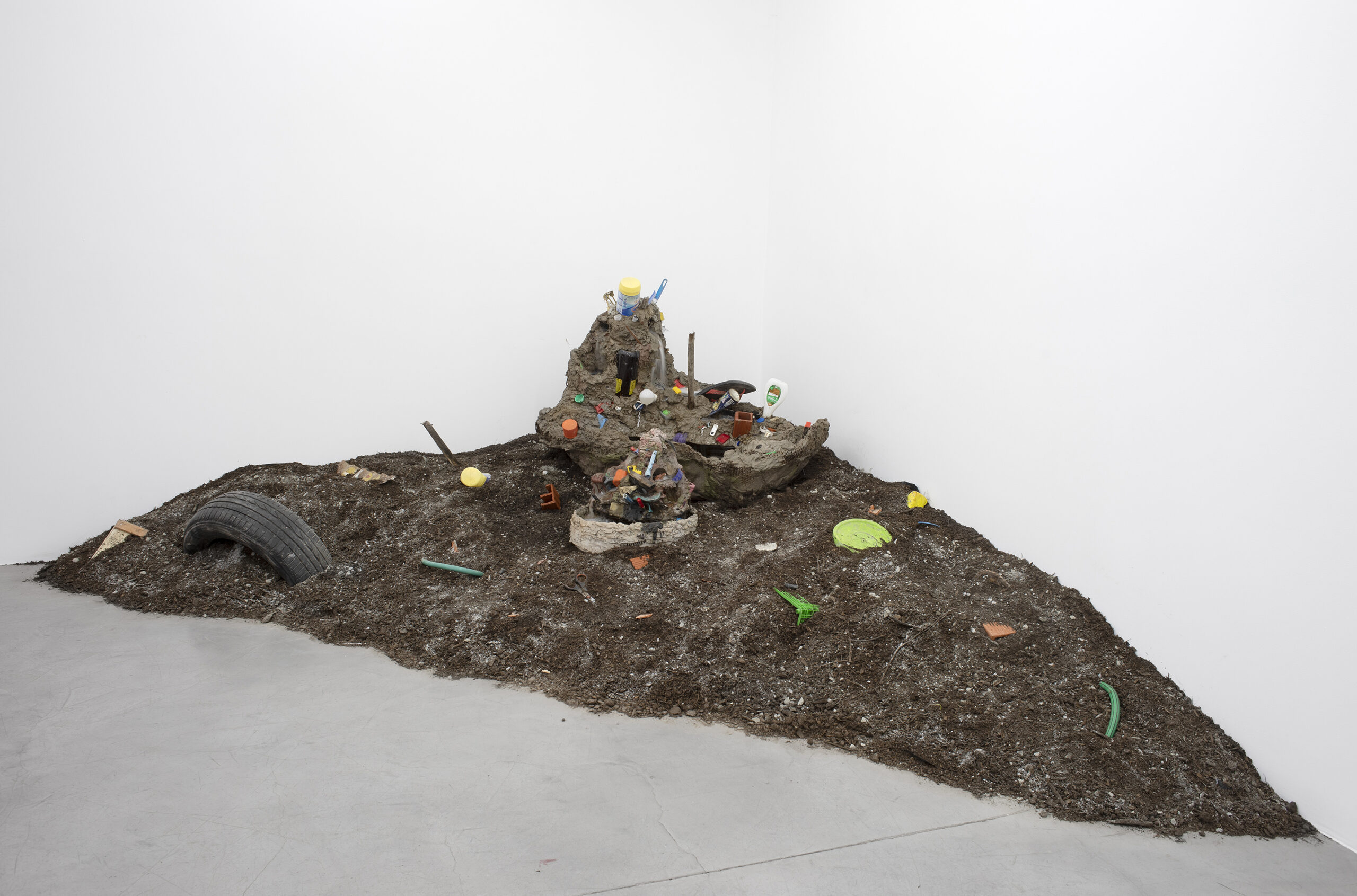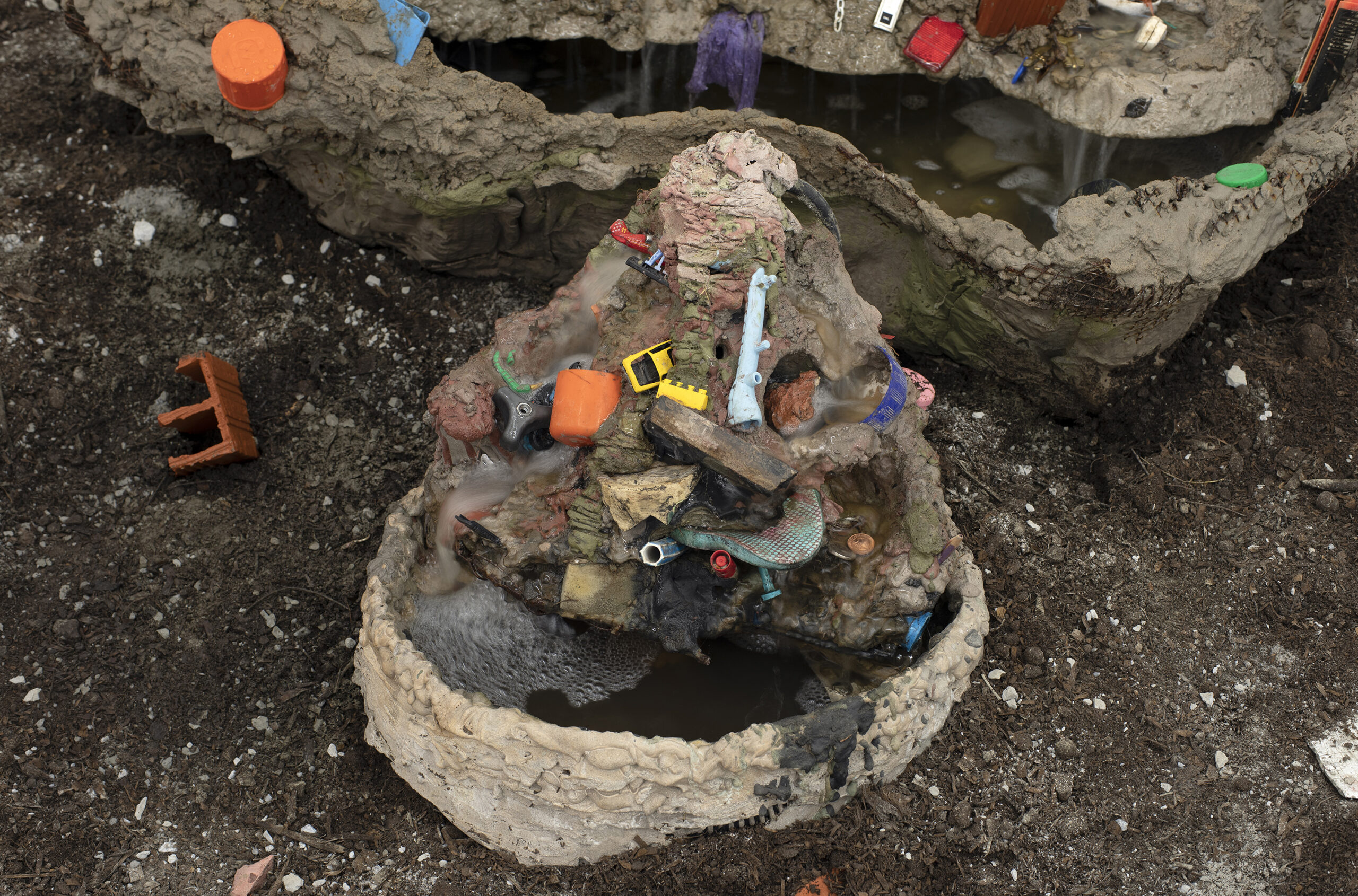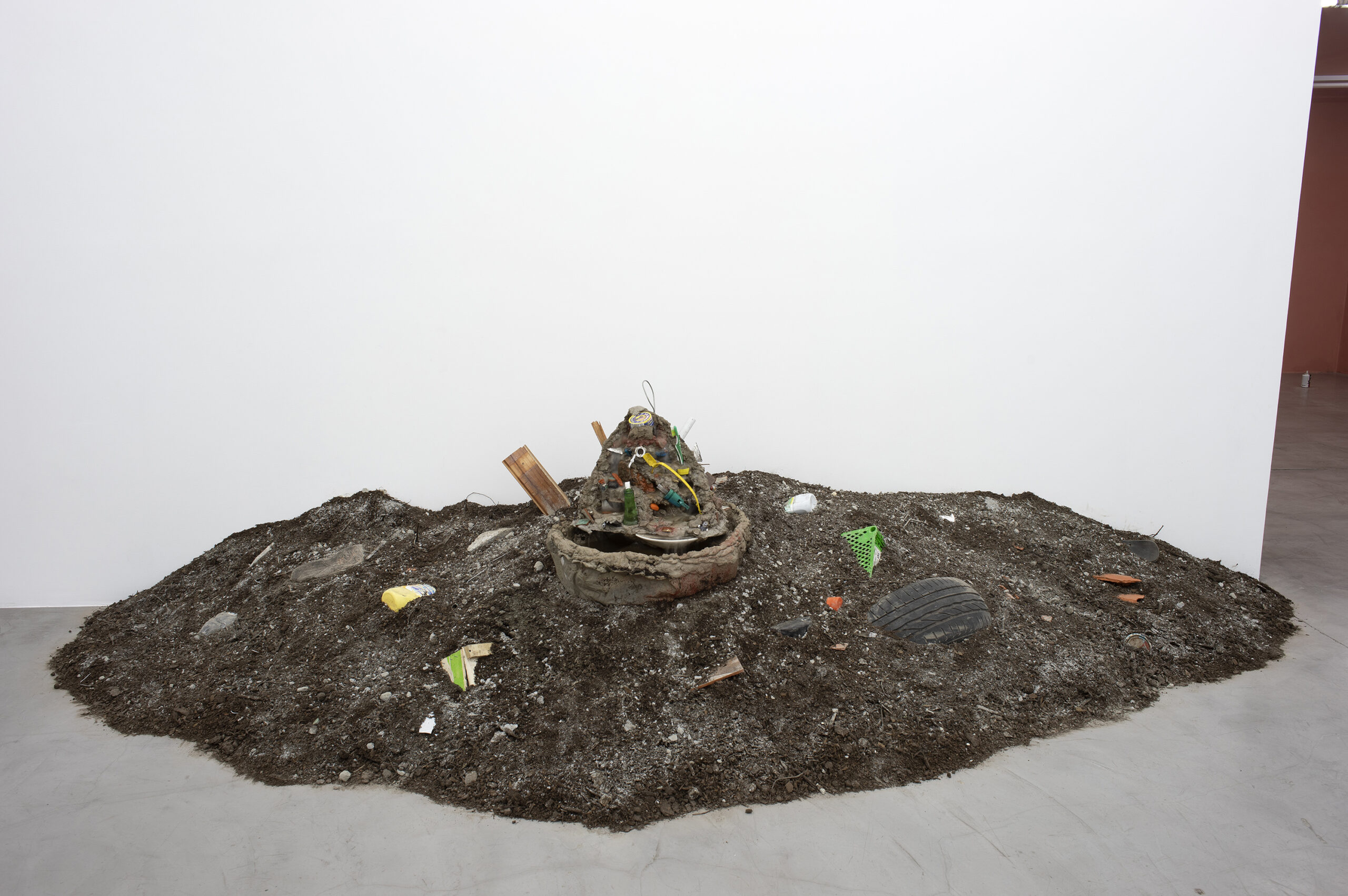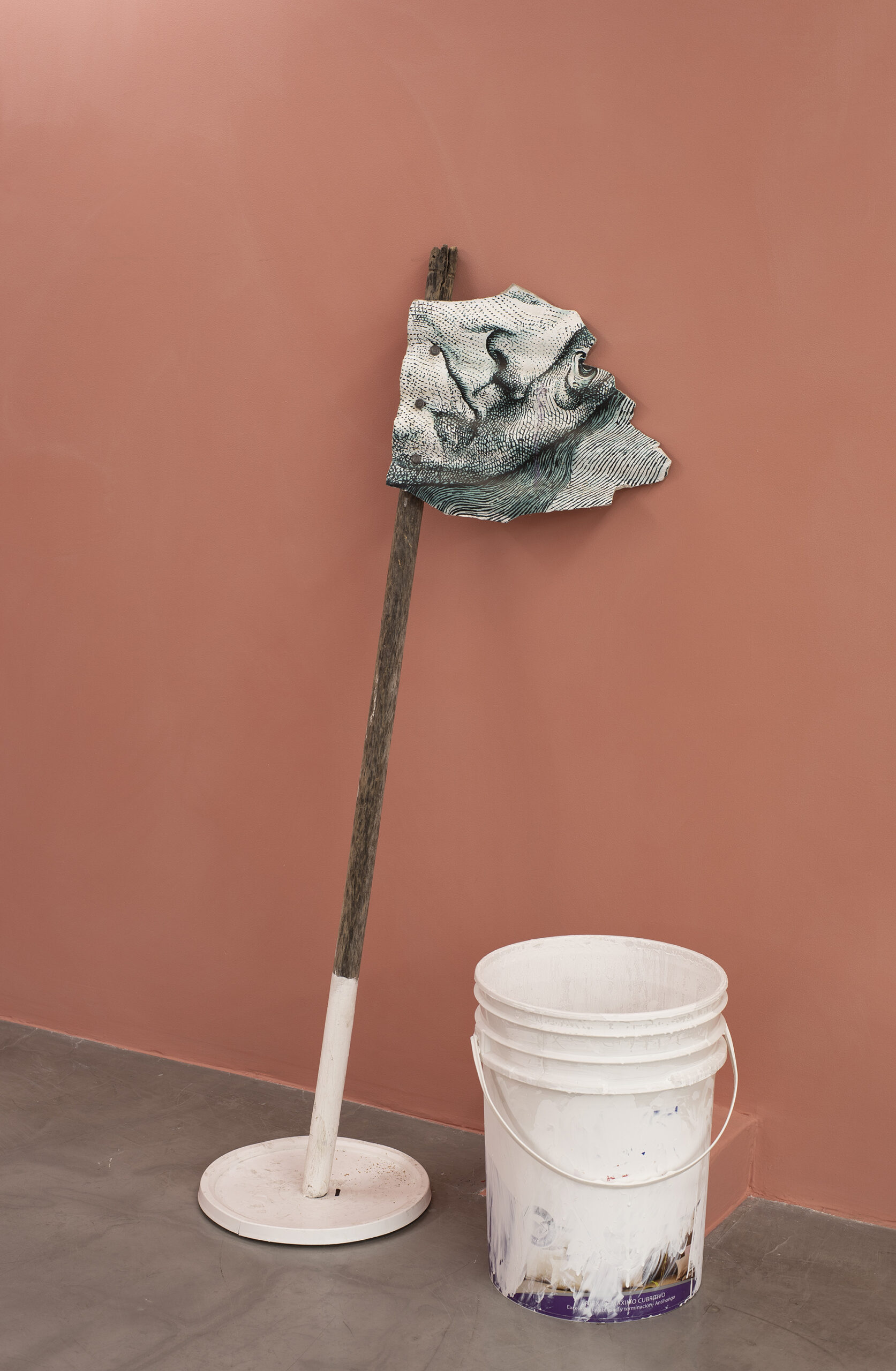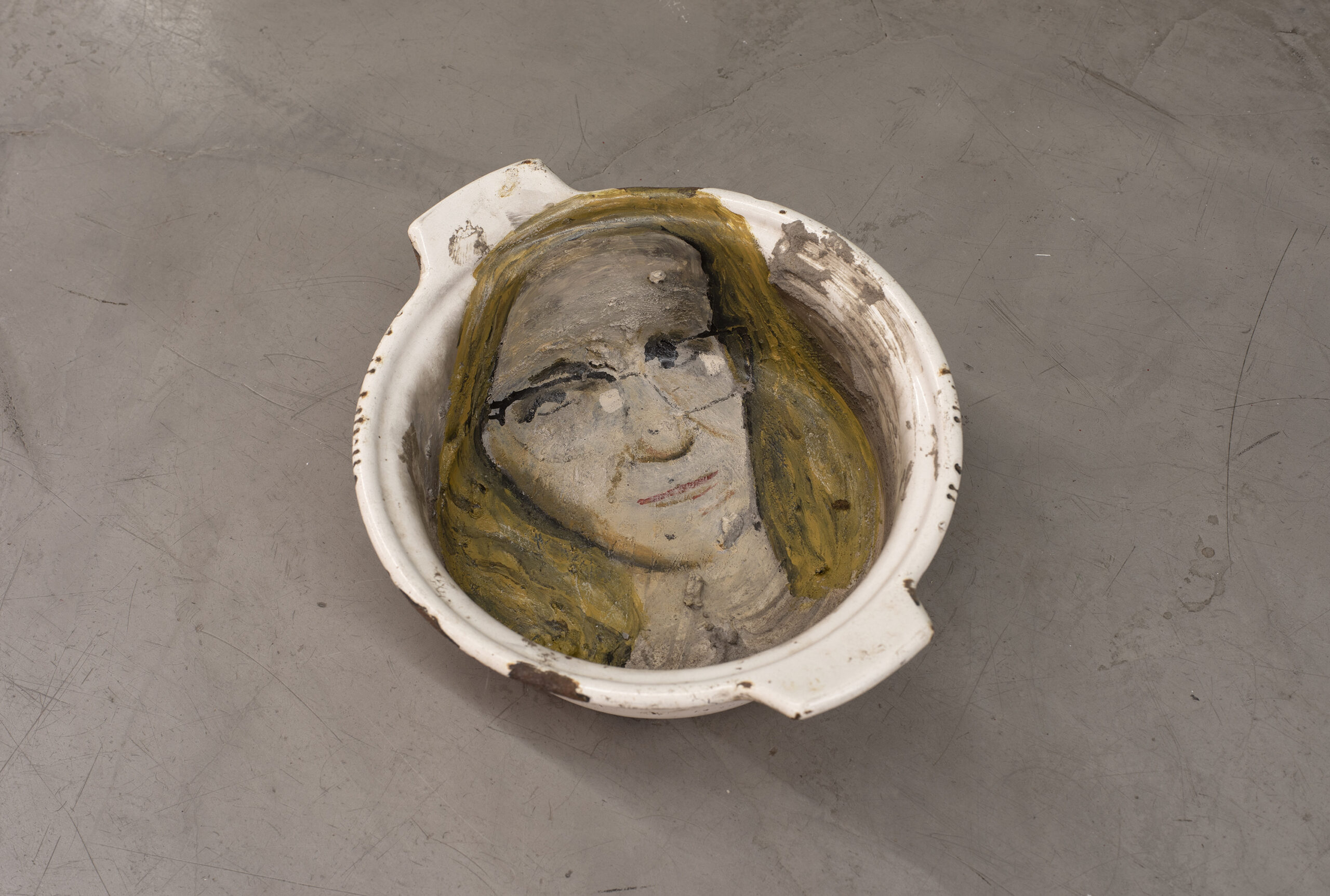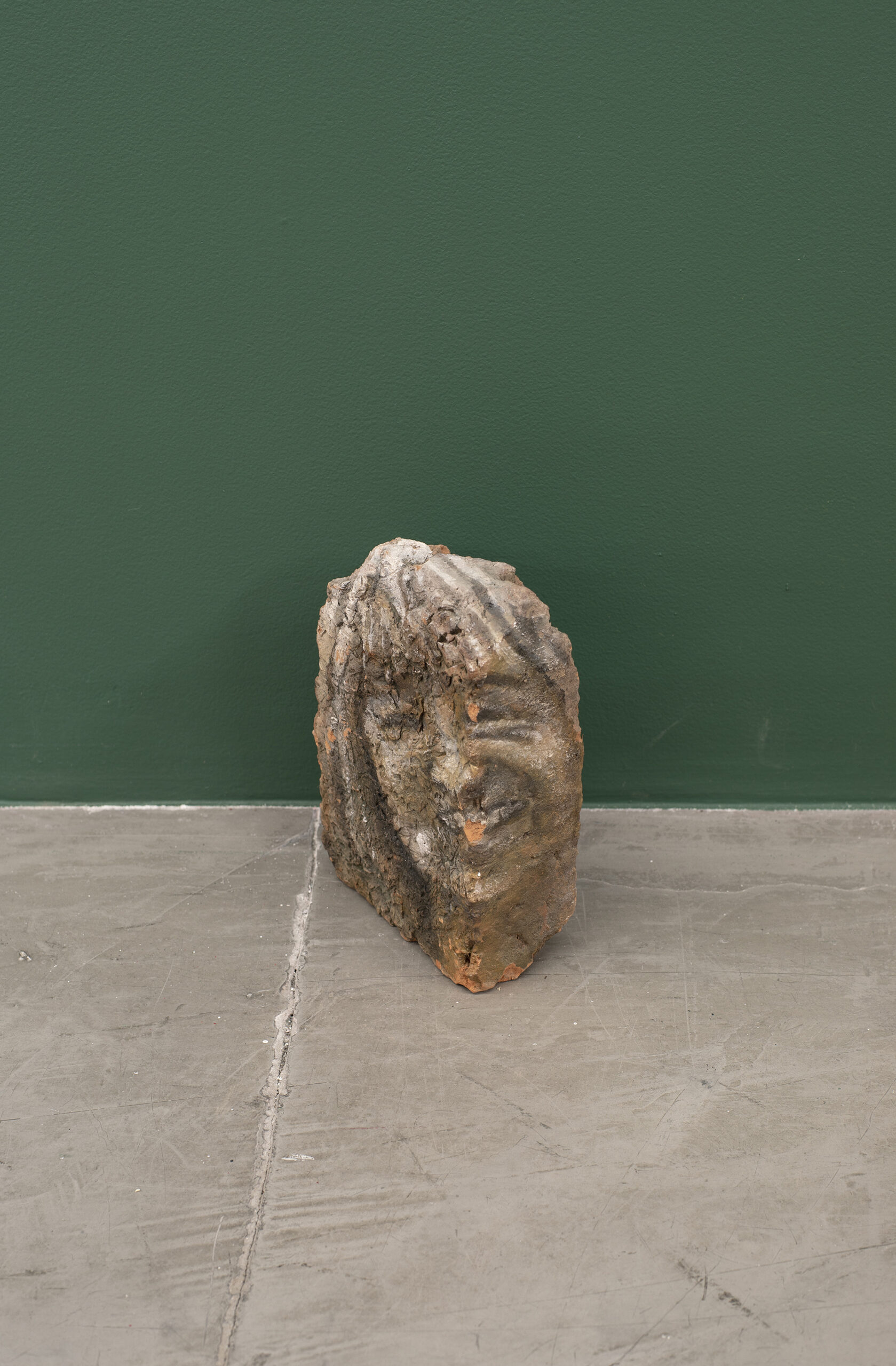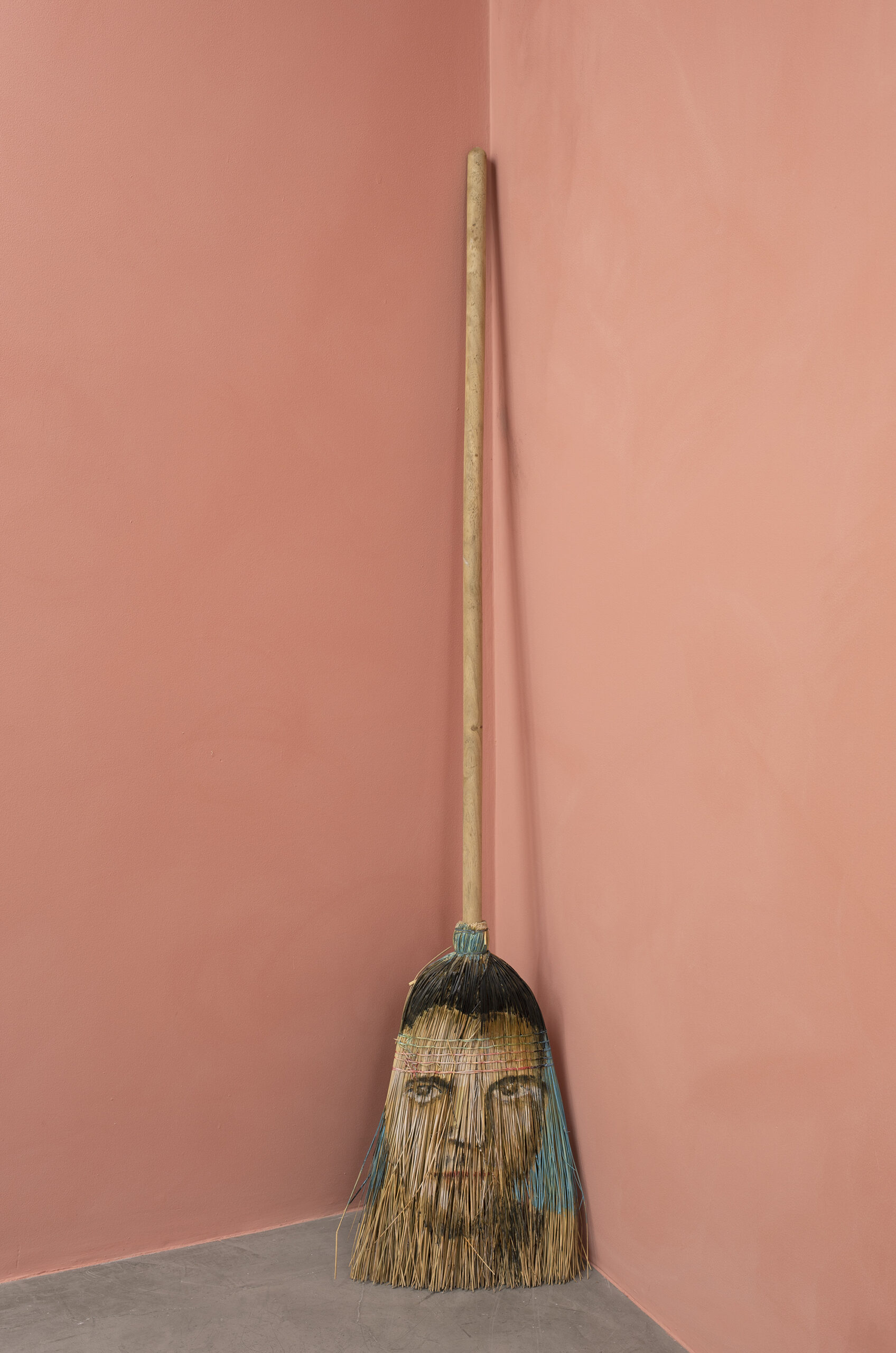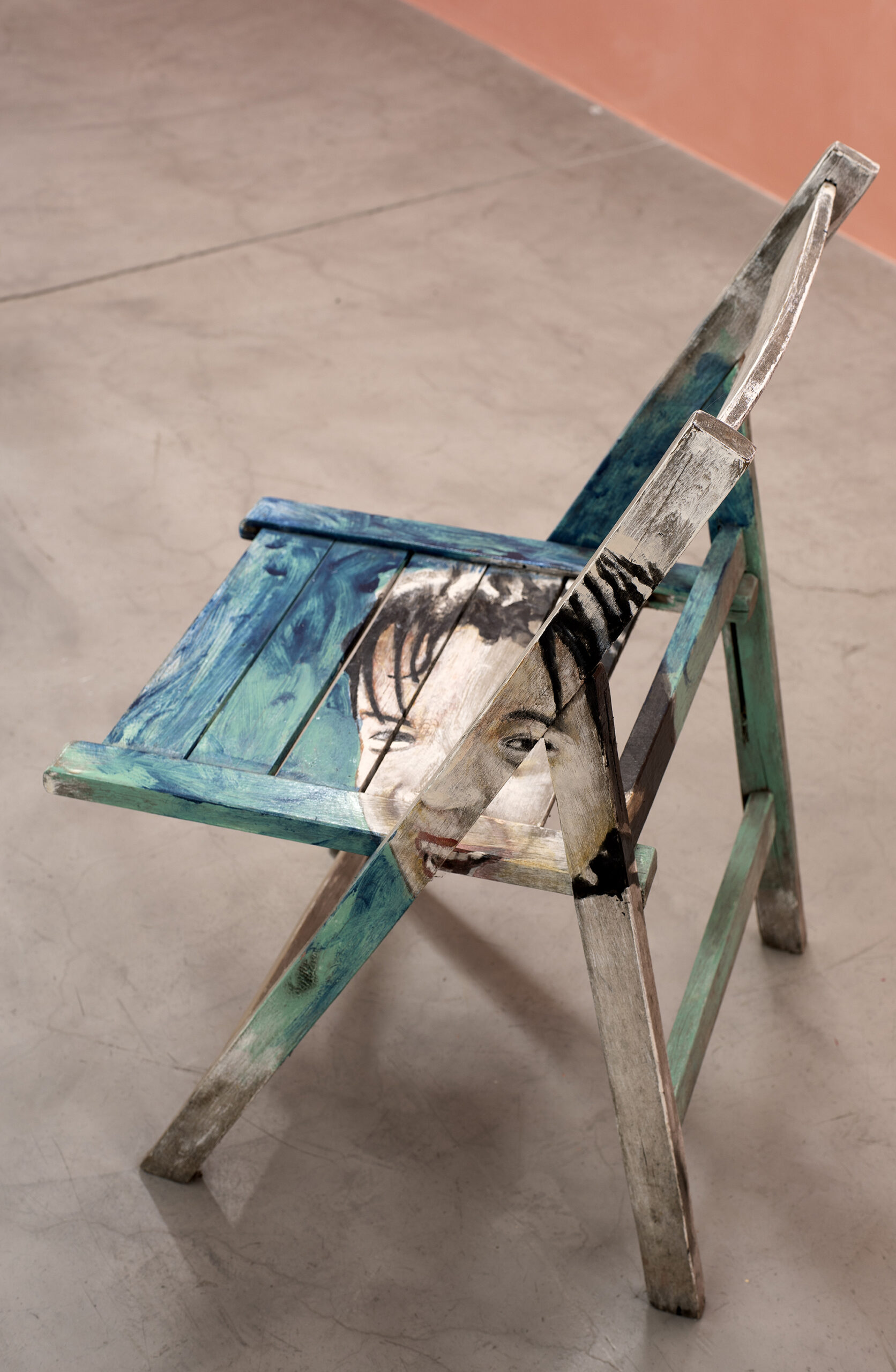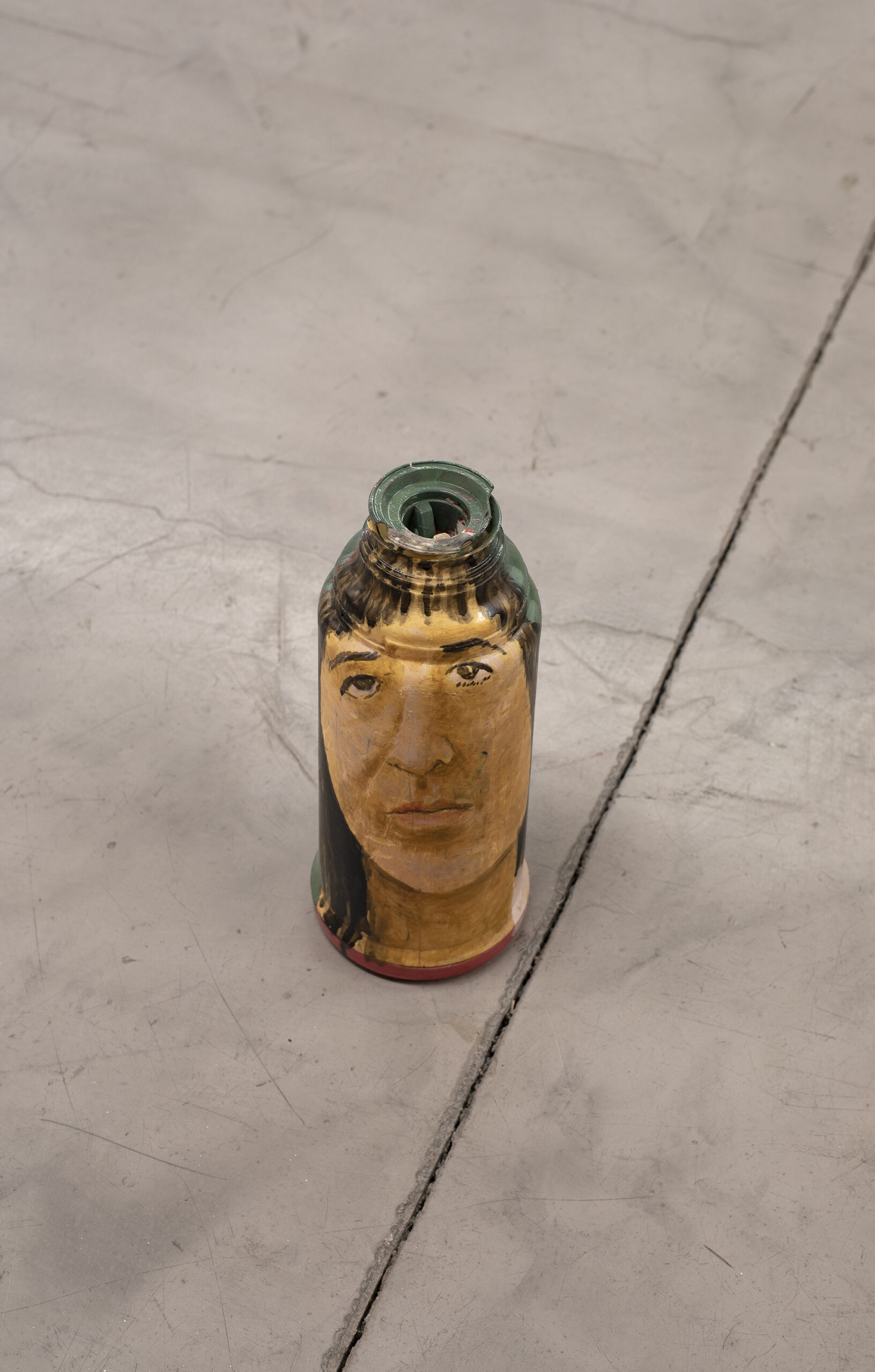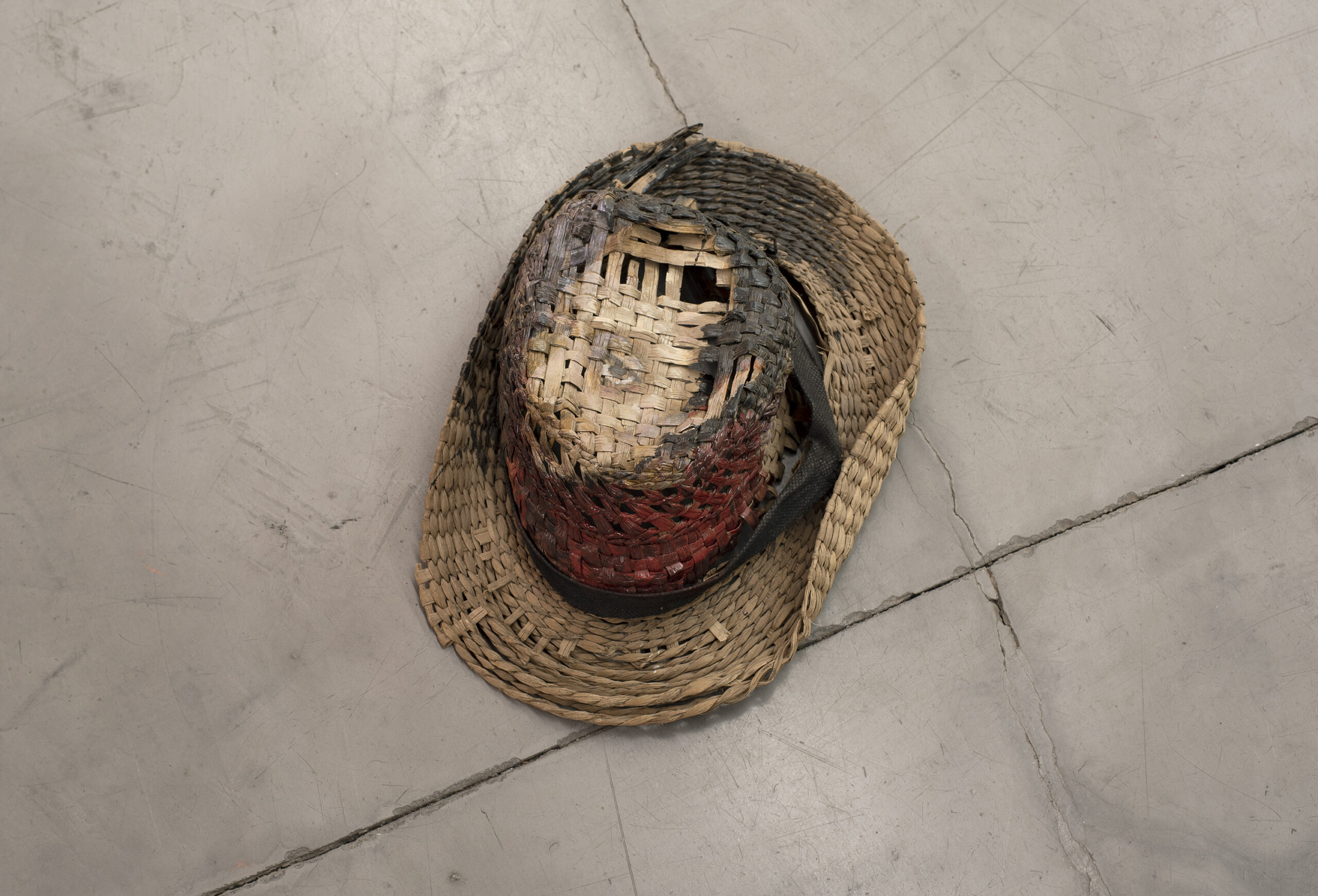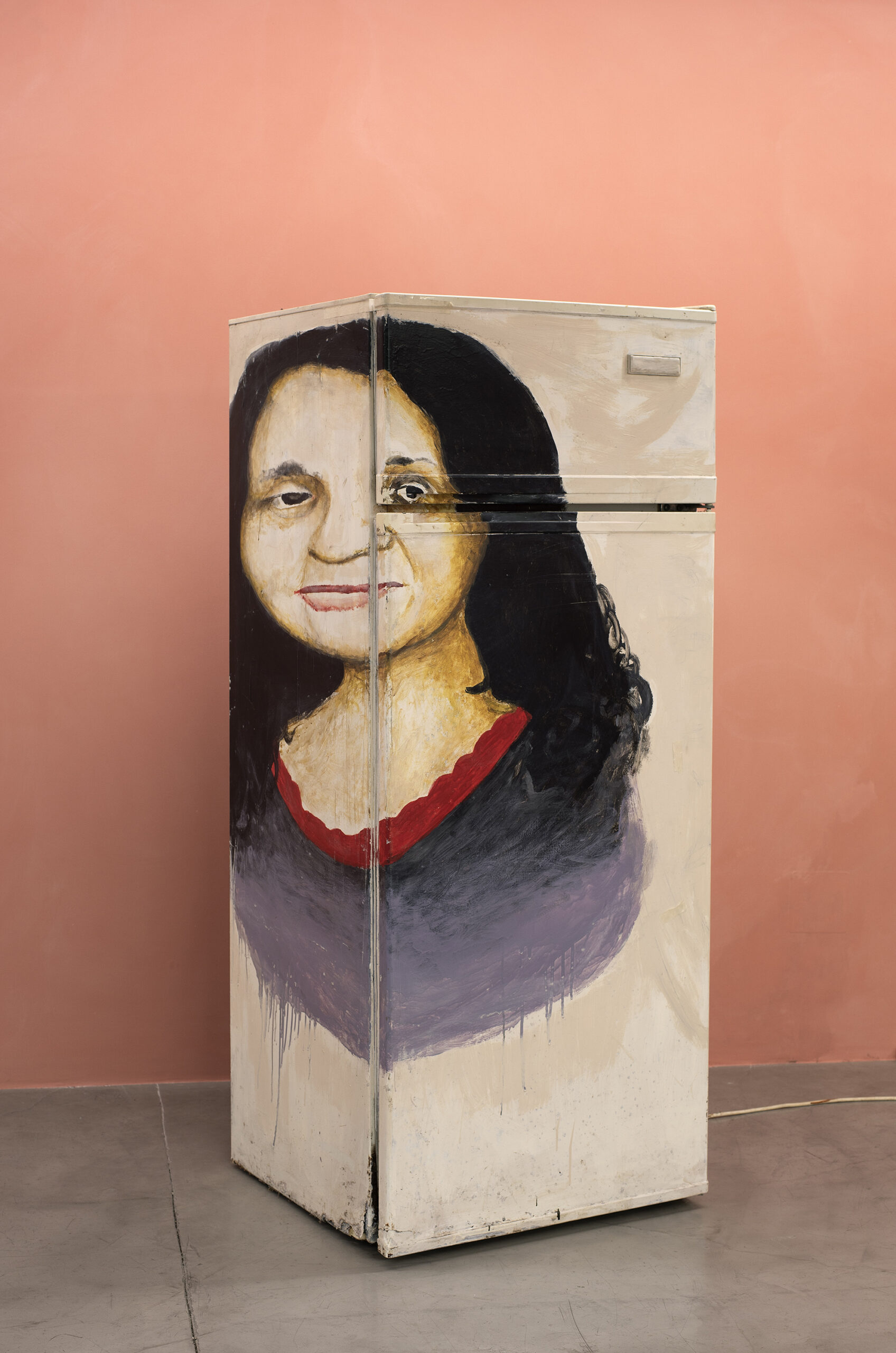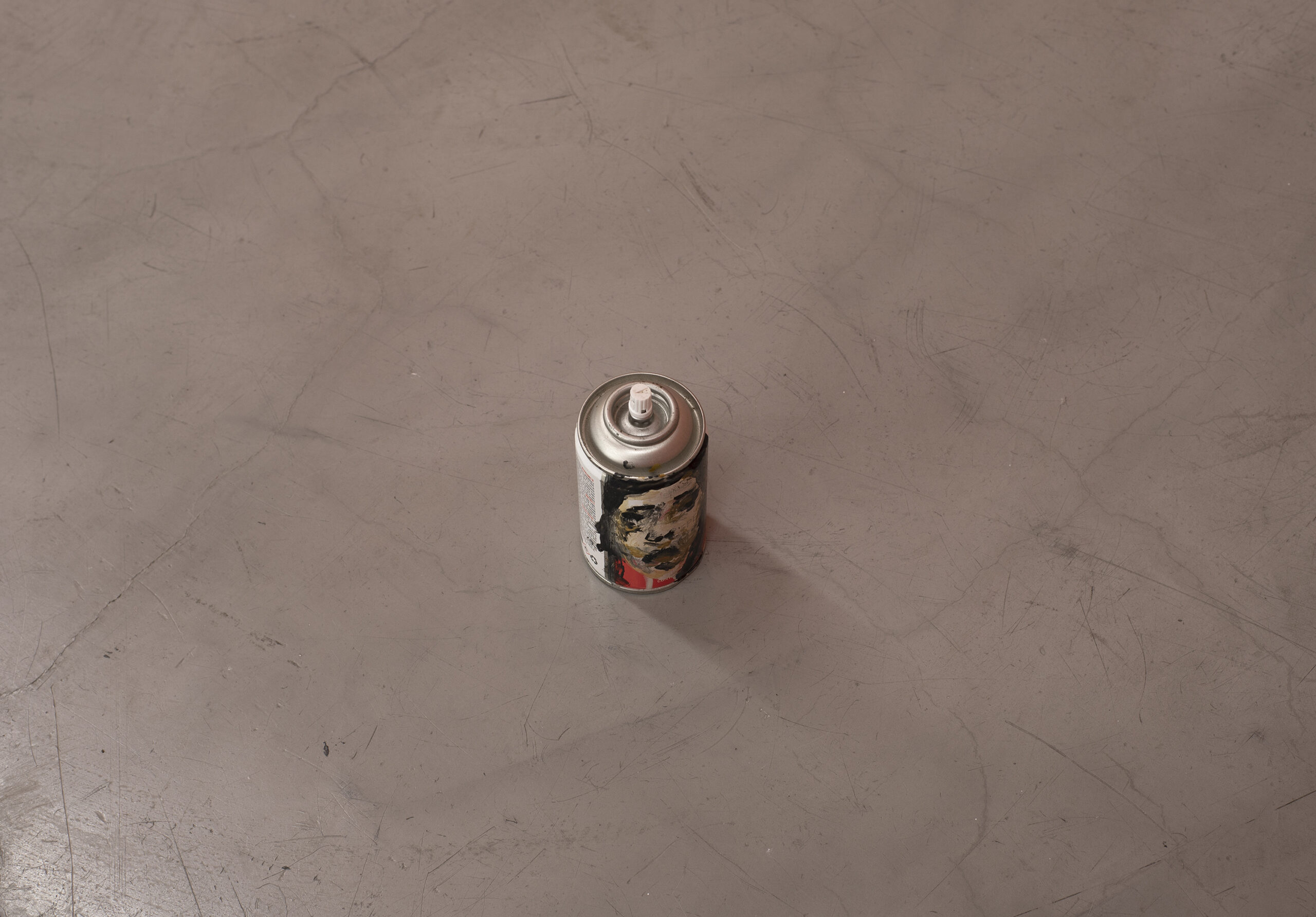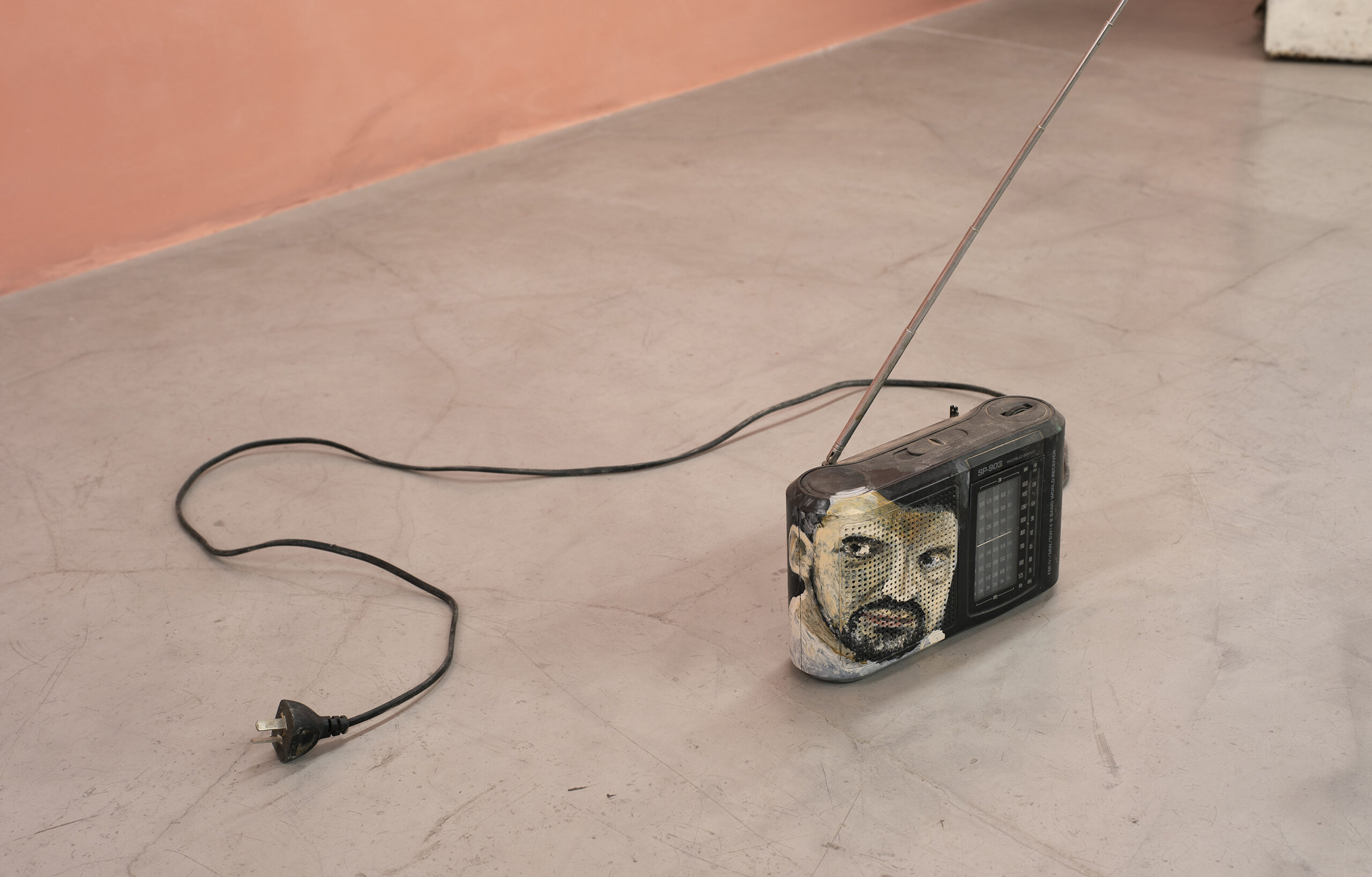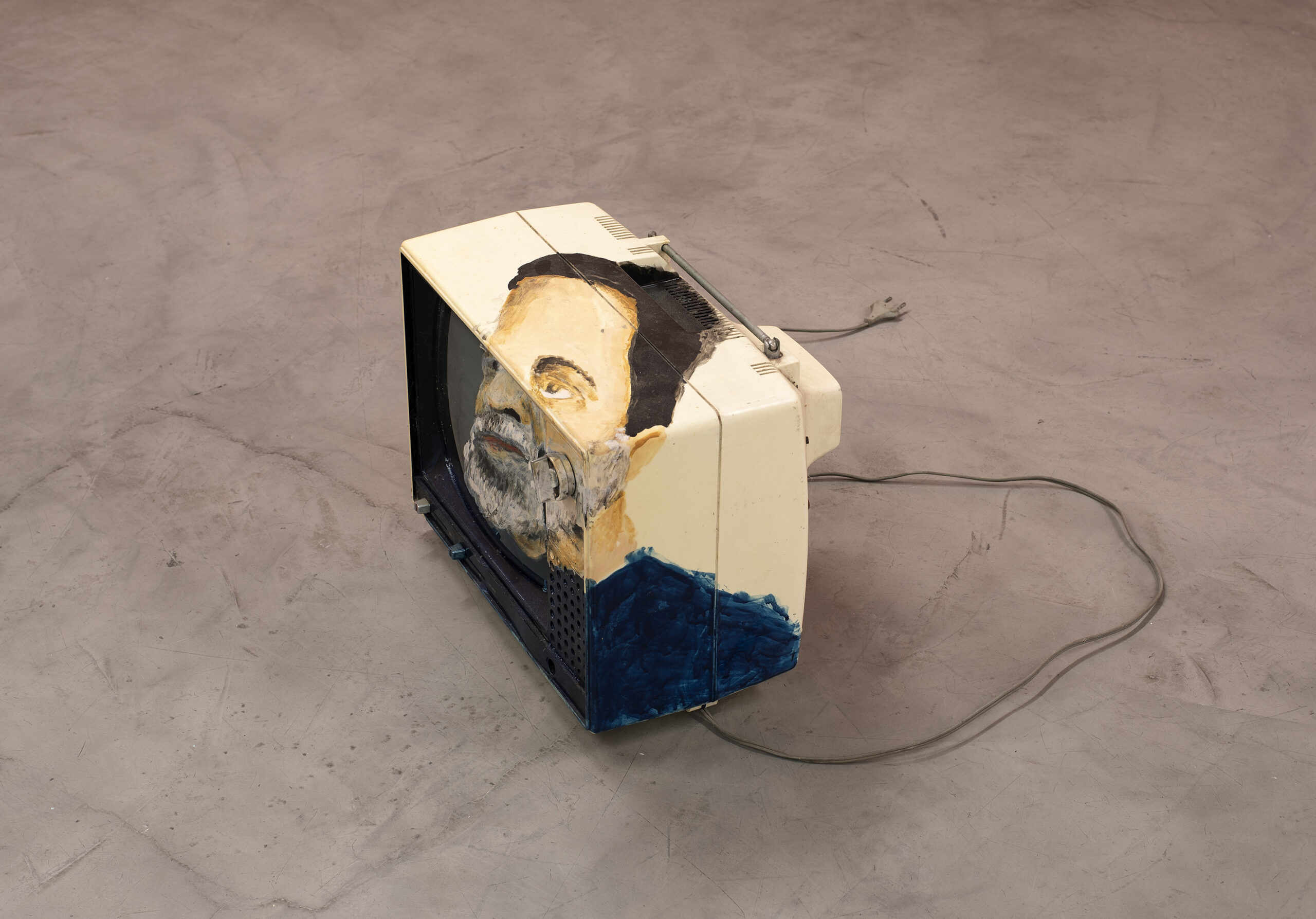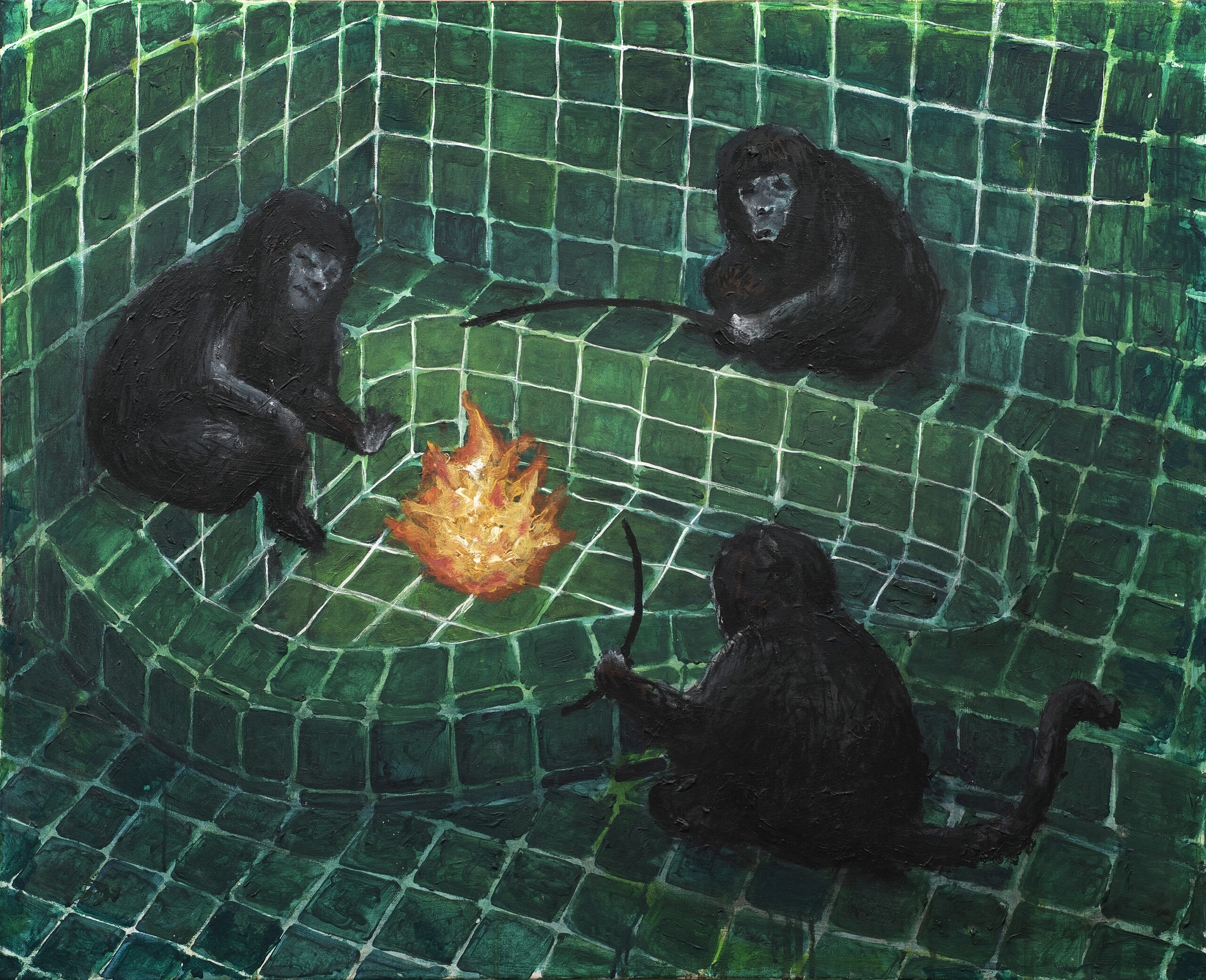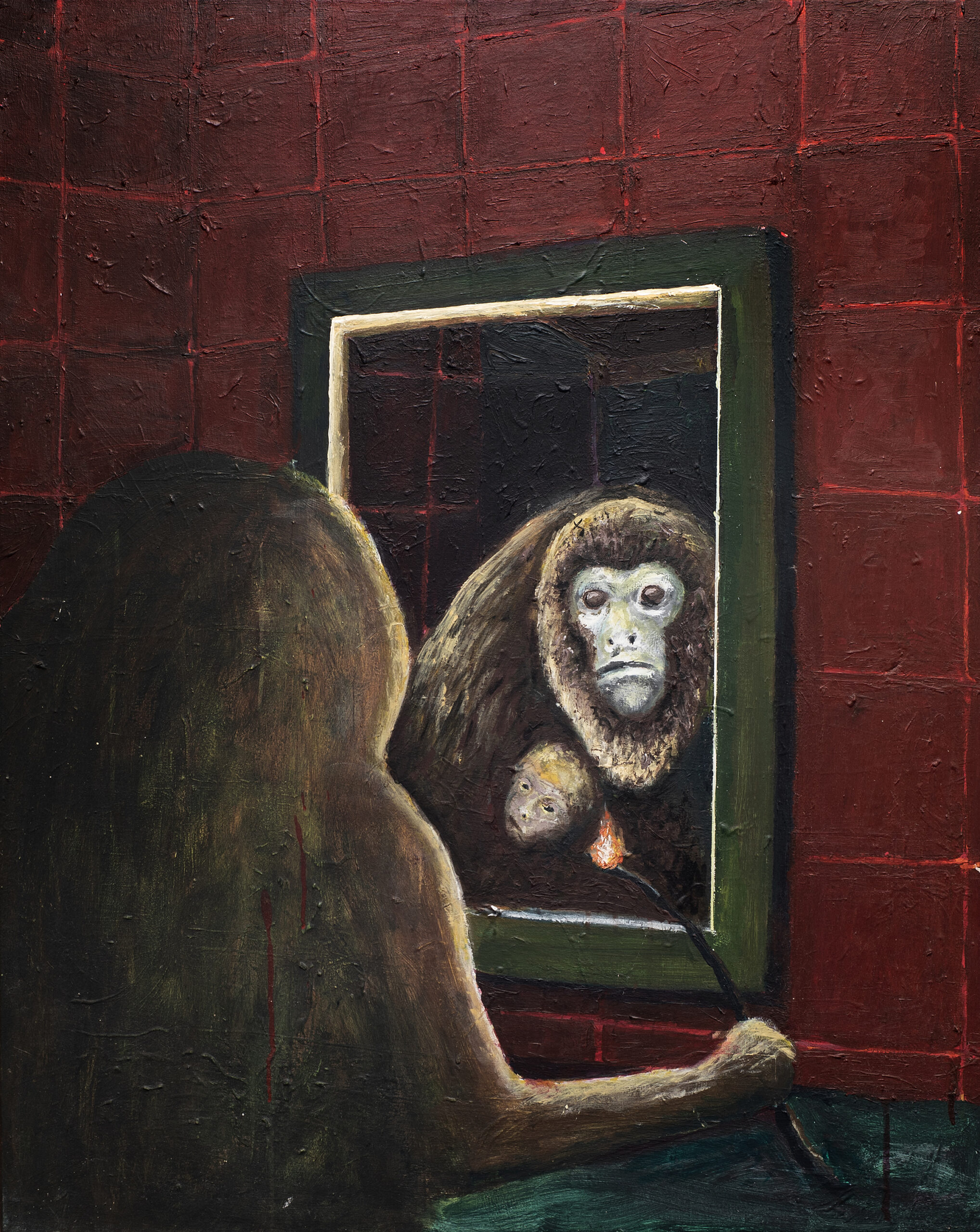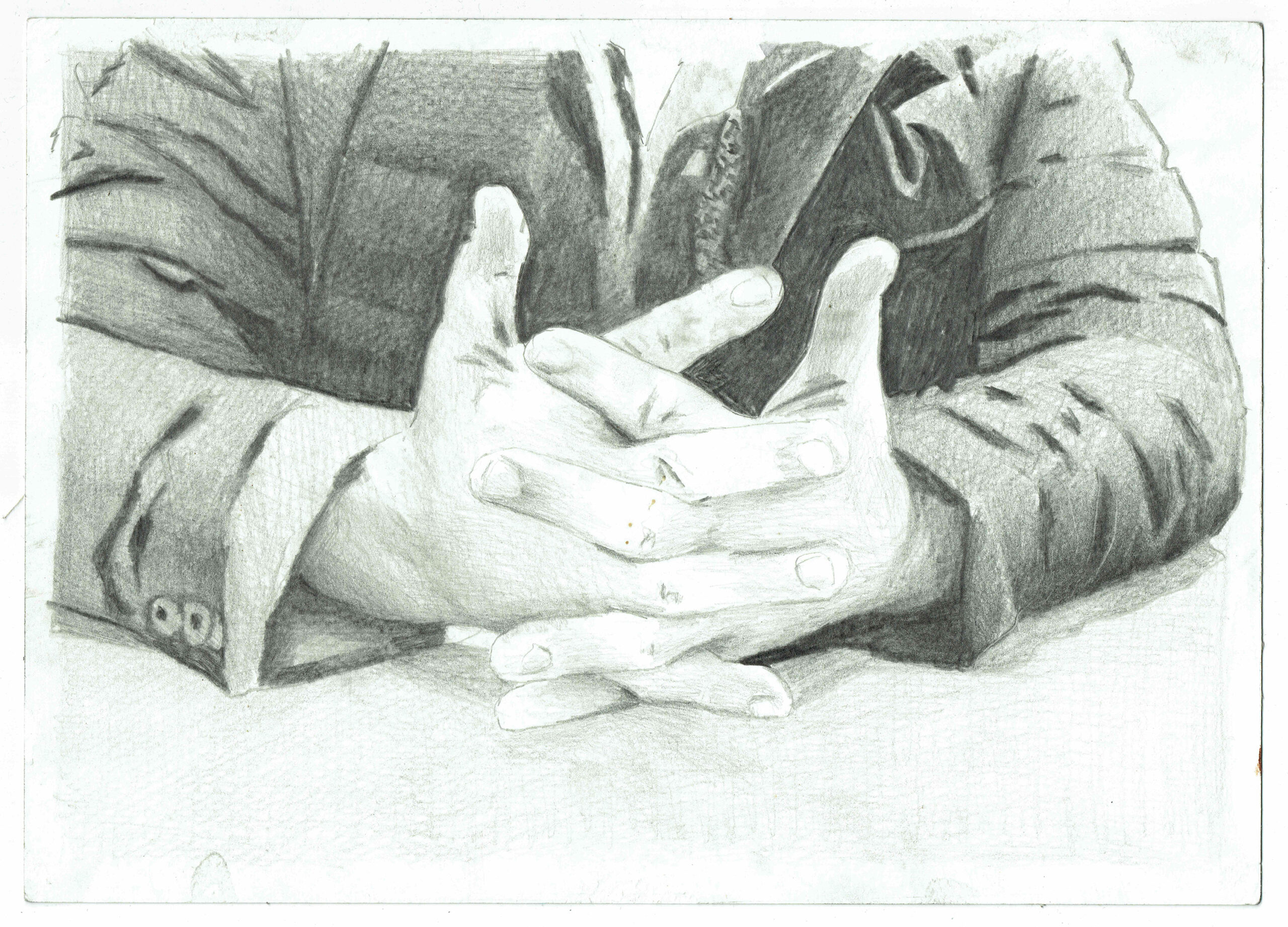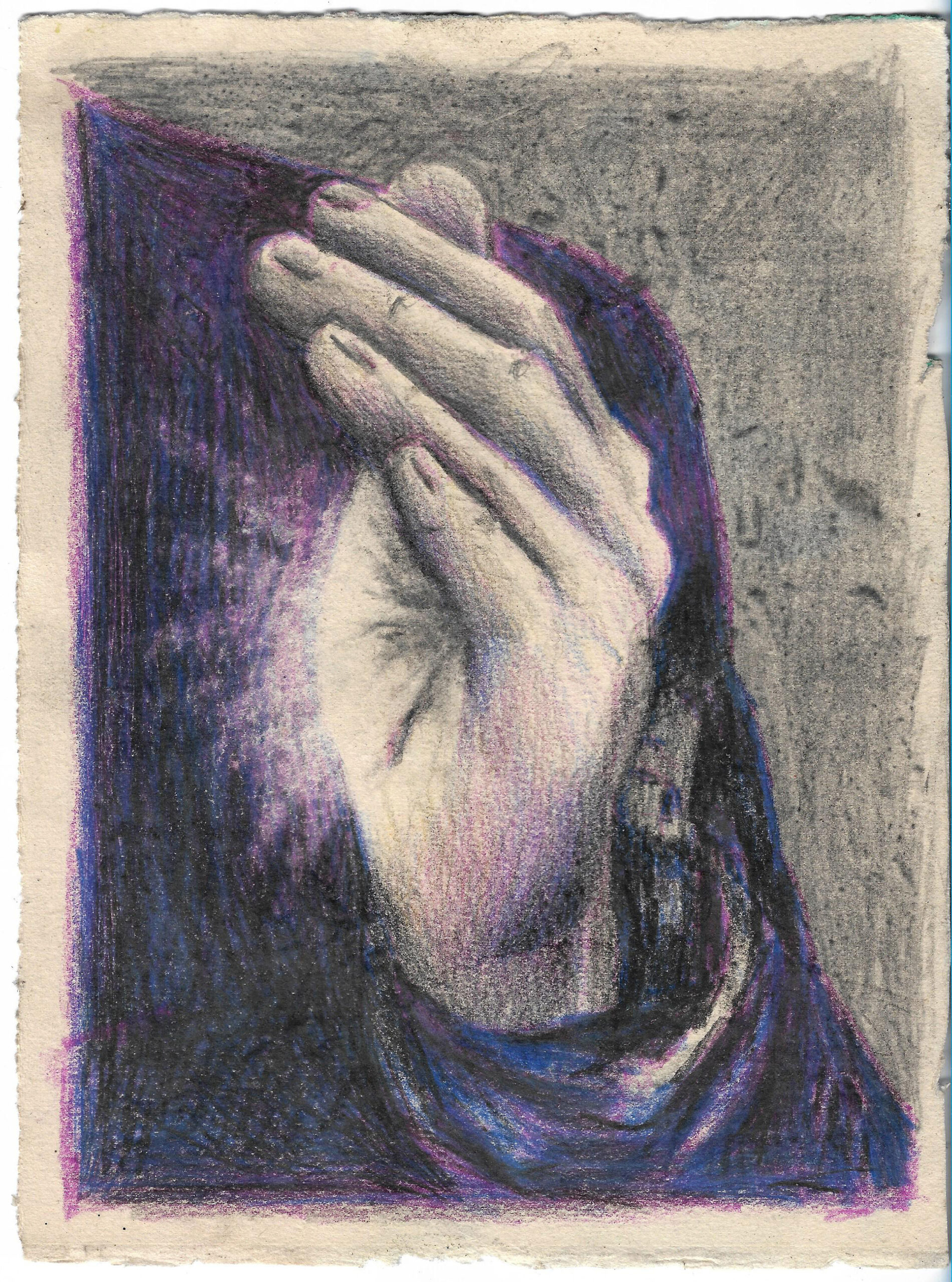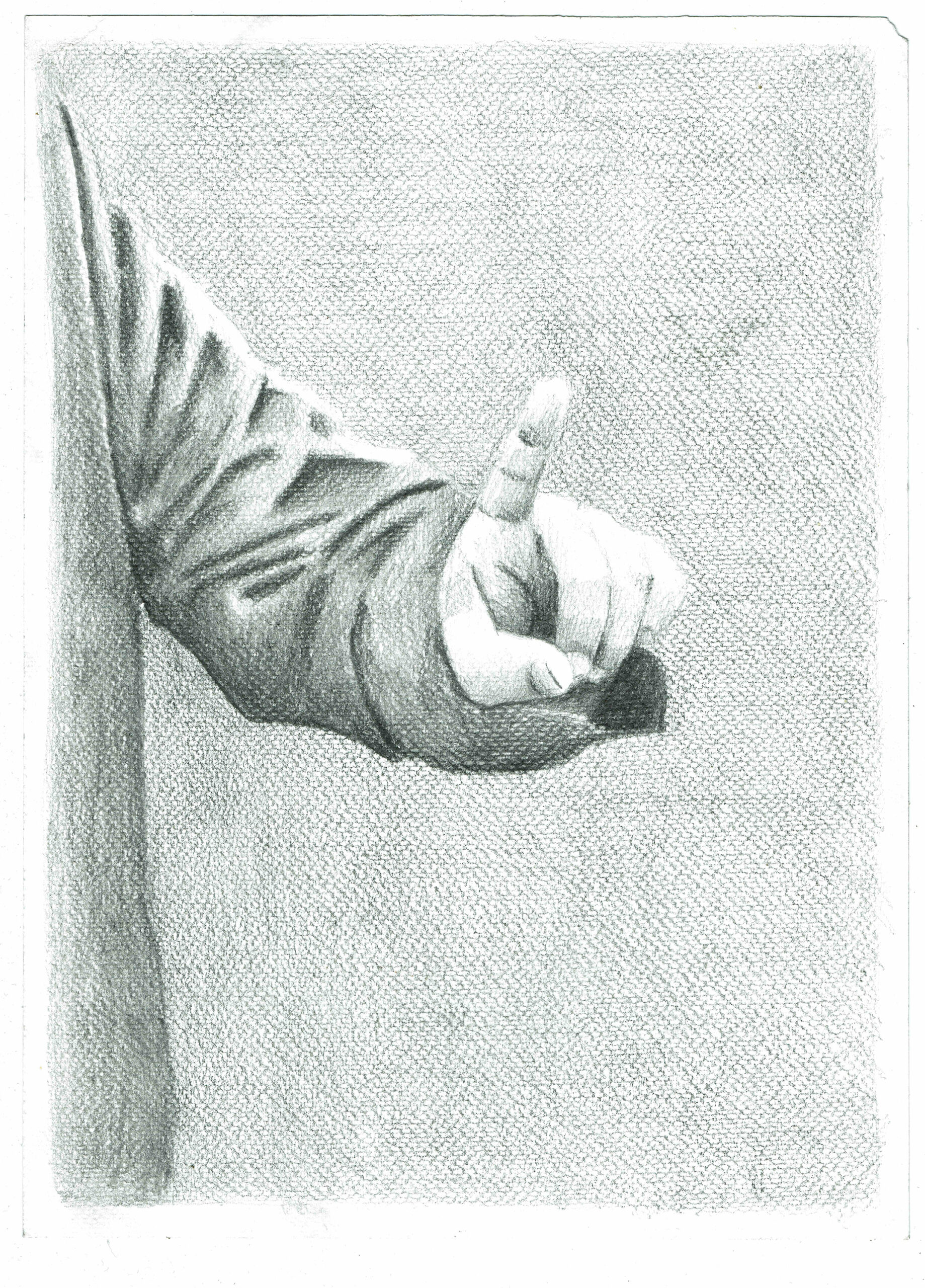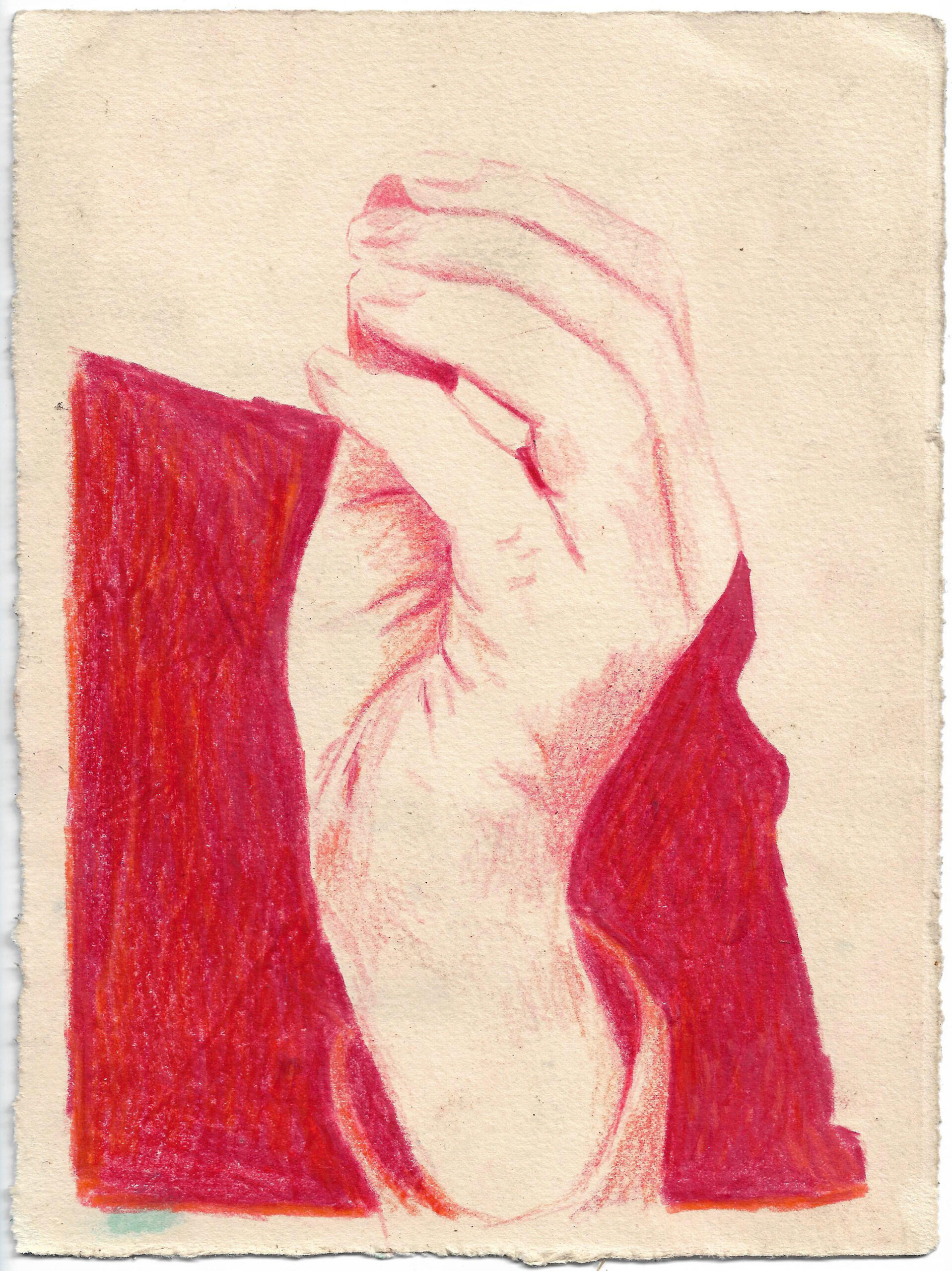TODOS ESOS RECUERDOS SE PERDERÁN COMO GOTAS EN LA LLUVIA
DIEGO FIGUEROA
CuraTED BY JOAQUÍN BARRERA
JUL 26. — oct 14. 2022
Ph. Ignacio Iasparra
WORKs
Una vez ví una casa en la que vivió cierta gente, 2022
Diego Figueroa
Various materials, cement and moving water
31.5 x 25.6 x 47.2 in (approximate measurements)
Una vez ví una casa en la que vivió cierta gente, 2022
Diego Figueroa
Various materials, cement and moving water
15.7 x 15.7 x 15.7 in (approximate measurements)
Una vez ví una casa en la que vivió cierta gente, 2022
Diego Figueroa
Various materials, cement and moving water
19.7 x 19.7 x 19.7 in (approximate measurements)
Una vez ví una casa en la que vivió cierta gente, 2022
Diego Figueroa
Various materials, cement and moving water
19.7 x 19.7 x 19.7 in (approximate measurements)
Bandera, 2016-2021
Diego Figueroa
Broomstick, lid and 20-liter paint bucket, and latex on fiber cement sheet roofing fragment
51.2 x 15.7 x 3.1 in
Como gotas en la lluvia, 2022
Diego Figueroa
Synthetic enamel and cement on cast iron skillet
11.8 diameter x 3.9 in
Como gotas en la lluvia, 2022
Diego Figueroa
Synthetic enamel on canvas sneakers
13.8 x 5.9 x 4.7 in
Como gotas en la lluvia, 2022
Diego Figueroa
Synthetic enamel on brick fragment
6.3 x 2 x 3.9 in
Como gotas en la lluvia, 2022
Diego Figueroa
Synthetic enamel and varnish on straw broom
55.1 x 11.8 x 2.8 in
Como gotas en la lluvia, 2022
Diego Figueroa
Synthetic enamel and varnish on wooden folding chair
31.5 x 19.7 x 19.7 in
Como gotas en la lluvia, 2022
Diego Figueroa
Synthetic enamel on thermos
4.3 diameter x 11.8 in
Como gotas en la lluvia, 2022
Diego Figueroa
Synthetic enamel on straw hat
3.9 x 8.7 x 13 in
Como gotas en la lluvia, 2022
Diego Figueroa
Synthetic enamel on glass jar
8.3 x 5.5 x 5.5 in
Como gotas en la lluvia, 2022
Diego Figueroa
Synthetic enamel on refrigerator
56.7 x 23.6 x 25.6 in
Como gotas en la lluvia, 2022
Diego Figueroa
Synthetic enamel on Mosquito Repellent Spray
2.4 diameter x 5.1 in
Como gotas en la lluvia, 2022
Diego Figueroa
Synthetic enamel on fishing box and boiler
11.8 x 13.8 x 7.9 in
Todos esos recuerdos se perderán como gotas en lluvia, 2020
Diego Figueroa
Acrylic on canvas
31.5 x 39.4 in
Todos esos recuerdos se perderán como gotas en lluvia, 2020
Diego Figueroa
Acrylic on canvas
39.4 x 31.5 in
S/T (palmadas violetas), 2021/2022
Diego Figueroa
Colored pencil and graphite on cotton paper
9.8 x 7.5 in
TEXT
ALL THOSE MEMORIES WILL WASH AWAY LIKE RAINDROPS
By Joaquín Barrera
A few days ago, I read a tweet by Marina Mariasch proposing that “we leave behind the false dichotomy between fiction and non-fiction once and for all” and, citing Vivi Tellas, affirming that “there is a gray area, a minimum and maximum threshold where reality is scene and vice versa”—a point equidistant from any formality that would make it possible to tag what is inside and what is outside, to separate them. At stake in that erasure of limits is an invisible hand that moves all the strings in that performance. Because so ubiquitous, that hand is part actor, part founder, part audience, and part narrator—all at the same time.
A wire fence divides the private from the public, the domestic from the earthly. Stepping into that inside means walking into the theater of operations where Diego Figueroa presents his most recent production, a place that unquestionably upholds the situations and customs of something like, perhaps, a neo-barroso1 magic realism from the steamy province of Chaco. Walking into the show is like going into your front yard, through the door to the chicken coop, clapping your hands to keep from scaring anybody. If with the gardens in the exhibition Mi Reina (Hache, 2018) the artist satirized the elegant fountains that adorned the French palaces of that country’s golden age and that are replicated on bizarre scale in gated communities in Argentina, this time Figueroa interrogates in equally mocking tone the repertoire of fungible objects that decorate our homes, their uses and functions, and the unbridled act of accumulating abandoned treasures.
The self-referentiality of Figueroa’s process has been a constant in his recent work, but that spectral quality is in no way bound to the images that his works project but rather to the stubborn construction of a method, a logic of chance assemblage, a string of random movements. As early as the show El tiempo entre las cosas (Braga Menéndez, 2011), there has been a hidden determination to become the curator of his own artifacts, to break with the intrinsic solemnity of the artist who always projects the same image. The identifying trait of Diego Figueroa’s art—one exacerbated in this show—is not the poetic results yielded by a repertoire of formal resources but rather the bare gesture of joining seemingly disparate works that function in the exhibition space beyond their visual organicity—something like an autonomous mechanism that, in the conjunction of its parts, forms gears of forces that motor the artist’s production, that drive him to desire it.
Diego Figueroa’s works are strewn around the gallery in an archeological map, a path that seems to have no way out, a journey through timeless landforms built on the remains of a lost civilization. The formal appeal of his art lies in the precarity and roughness part and parcel of the random joining of materials, in that interstice between the homemade, the supreme technical quality, and that clumsy cheekiness in the manufacture that turns these pieces into precious ornamental gems of staggering beauty. The accumulation, disarray, and reconfiguration of everyday objects is a constant in his work as was evident in the installation (and in the paintings) in the show Cuando todo el ruido se duerma (Centro Cultural Haroldo Conti, 2014). That wealth of disposable figurines is, today, mediated by the deliria of water and the inclemency of weather. The water that flows over the fountains wears away the objects that decorate
them to gradually erase the traces imprinted on memory. All that remains where there was passage of time, uses, and fondness is forgetting sieved by the rivers that sneak through the cracks and turn the archives of history into sediment.
The other space: the inside of the inside. On one of the walls painted dollar-bill green, a giant puzzle with a great many graphite drawings makes up an unfinished sign language. Seemingly anonymous speaking hands mark the fate of a daydreamed community. In their gesture—as in all gestures—the hands have the gift of camouflage, of being source of tenderness or of violence, of company or of unyieldingness. These hands are communicational events. They are, after all, the ones maneuvering the strings of life and of death, of hunger and of wealth, of flooding and of beings lost at sea.
Like a small riverside museum, this inside also holds portraits on home appliances, utensils, sneakers, and other everyday objects. I am not sure whether here or in the case of the hands it matters who they are. But unlike the hands, these portraits have a face, a novel secret, an affectivity, a story yet to be told—a story of discovery, of an approach, of the eye looking out in the perfect distance, the one that Diego planned for us. Something magical happens between these paintings and the viewer: A whispered story that sets off pathos in the gaze of the viewer through the minute discovery of the resource that Figueroa takes from the street and then uses to construct these unfinished fictions about time, about the course of life, about affective memory, and about modes of forgetting.
In Todos esos recuerdos se perderán como gotas en la lluvia, Diego Figueroa shows himself to be a scathing and capricious storyteller who uses Gestalt visual technologies to stage situations halted in a chronically latent dynamism where viewers are placed centerstage. Stepping behind that curtain or fourth wall or third-person story or free literature of the self is, in this exhibition, essential to keeping dry in the downpour.
July 2022, in Buenos Aires,
but also in Resistencia and Colonia Benítez
1 Translator’s note: Literally neo-muddy, the term neo-barroso, a twist on neo-barroco (neo-baroque), was coined by Néstor Perlongher in reference to a certain body of literature from the Río de la Plata.
ARTISTS
Diego Figueroa
